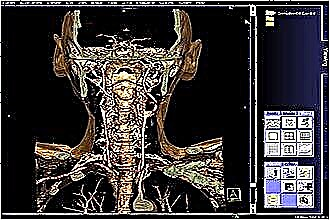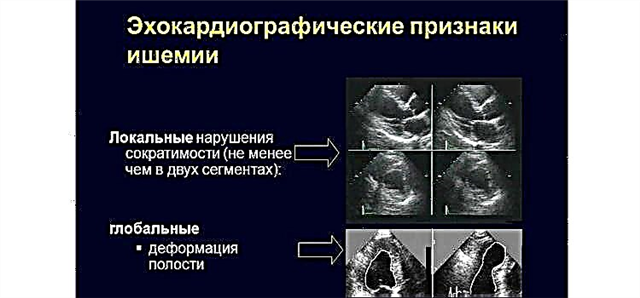One of the most important protective functions of the body is carried out by the tonsils. They participate in the formation of immunity and are the first to "reflect" the blow of infections that penetrate the human body. Distinguish between paired and unpaired tonsils. The second type should be attributed, the fourth of the six - lingual.
What is it?
 These are accumulations of lymphoid tissue that are located in the mucous capsule of the lingual root. Despite the fact that this organ is not paired, most people have two lingual tonsils. The structure of the concept under consideration is follicles of rather large sizes, the number of which differs depending on the age category of people. For example, babies under one year old have no more than 15 of them, by the age of five the number doubles and only by the age of 30 a person has about 40 follicles, which is the maximum indicator. To a more mature and old age, their number decreases. It should be noted that in children and adolescents, the amygdala occupies almost the entire area of the hyoid root.
These are accumulations of lymphoid tissue that are located in the mucous capsule of the lingual root. Despite the fact that this organ is not paired, most people have two lingual tonsils. The structure of the concept under consideration is follicles of rather large sizes, the number of which differs depending on the age category of people. For example, babies under one year old have no more than 15 of them, by the age of five the number doubles and only by the age of 30 a person has about 40 follicles, which is the maximum indicator. To a more mature and old age, their number decreases. It should be noted that in children and adolescents, the amygdala occupies almost the entire area of the hyoid root.
Functions of the lingual tonsil
The lingual tonsil, like others, protects the body from various bacterial and viral agents, which, together with inhaled oxygen, enter the human nasopharynx. It happens as follows - when an infection enters the lymphoid tissue, immune cells begin to form, which act in the fight against pathogens.

The high function of blood supply to the tonsils allows suppressing the vital activity of various bacteria and microbes.
Sometimes the immune system malfunctions, and as a result, the ability to resist microorganisms is reduced, which allows them to tightly "occupy" the tonsils, provoking inflammatory processes.
What affects hypertrophy?
A healthy amygdala, being small in size, is barely visible visually. As a result of external influence, it increases (hypertrophy), which causes the corresponding symptoms.
There are several variations of this process:
- The lymphoid form occurs as a result of tissue inflammation;
- The vascular-glandular form provokes an increase in the number of mucous glands against the background of the growth of vascular plexuses and significantly reduces the content and quality of the structural element.
Various factors can affect the increase in the lingual tonsil in size. The most common are:
 inflammatory processes of the palatine tonsils;
inflammatory processes of the palatine tonsils;- oral cyst;
- angina;
- an increase in the size of the tonsil located in the pharynx;
- damage to the tongue by microorganisms or injury;
- the effect of radiation;
- exposure to the body of chemical and thermal factors;
- genetic factor;
- drinking alcoholic beverages;
- smoking;
- operations on the tonsils;
- violation of the digestive function.
Usually, the increase in the size of the amygdala does not go unnoticed. This pathology is the cause of significant changes in the human body, causes discomfort, interfering with the usual daily routine, and reduces performance.
Symptomatic manifestations are expressed by painful sensations when swallowing, bouts of constant dry cough for no significant reason; hyperemia is visible in the throat; the voice becomes nasal; snoring appears in a dream.
Therapeutic measures for an increased size of the amygdala
Such symptoms require consultation with a qualified specialist who will help identify its origin and prescribe the necessary treatment.
Therapeutic measures for tonsillitis (the most common disease):
 will be sent mainly for examination to determine the causative agents of sore throat and drug sensitivity.
will be sent mainly for examination to determine the causative agents of sore throat and drug sensitivity.- The bacterial nature of the disease involves the appointment of antibiotics.
- Local therapy with the use of anti-inflammatory and antiseptic agents ("Bioparox", "Chlorhexidine") for rinsing and irrigating the tonsils, pain-relieving lozenges and lozenges is added to the main therapeutic measures.
- To prevent irritation of the tonsils, an abundant drink, a gentle diet, and vitamins are prescribed.
- We recommend bed rest, airing the room and daily wet cleaning.
If the listed measures are not effective, the amygdala continues to increase in size, removal is prescribed. For this, modern medicine uses the method of laser coagulation or cryodestruction (5-8 sessions). Surgery is rarely done because of the adjacent arteries and the threat of bleeding. With frequent inflammatory processes in the amygdala, exposure is performed using radiation therapy.
Tumor formations
The most dangerous pathological changes are tumor formations, which are benign and malignant.
 Neoplasms of a benign nature do not pose a threat to human life and health, but their appearance requires surgical intervention. Tumor processes look like small seals resulting from improper cell division. At the moment of the appearance of new cells, the already existing ones do not have time to die off, which is the cause of pathologies of various types and contents.
Neoplasms of a benign nature do not pose a threat to human life and health, but their appearance requires surgical intervention. Tumor processes look like small seals resulting from improper cell division. At the moment of the appearance of new cells, the already existing ones do not have time to die off, which is the cause of pathologies of various types and contents.
- Neoplasms in the form of a dense layer of epithelium and suggesting removal by surgery, for example, papillomas, are epithelial.
- Accumulations of a lymphatic nature with many blood vessels, for example, lipoma, fibroma, the treatment of which is aimed at eliminating the tumor by surgery, are non-epithelial.
With timely diagnosis and treatment, the prognosis is positive, without the development of complications.
Neoplasms of a malignant nature do not lend themselves well to early diagnosis, which poses a threat to the patient's life. However, in most cases, cancer is treatable.
For favorable prognosis and recovery, timely detection of pathological processes is required, therefore it is important to attend preventive examinations in polyclinics.
Caring for the health of the tonsils and the whole body requires quitting smoking and alcohol abuse, providing the body with adequate nutrition with a sufficient amount of vitamins and minerals, exercising, and taking walks in the fresh air every day. Do not underestimate the protective functions that the lingual tonsils carry out in the human immune system.

 inflammatory processes of the palatine tonsils;
inflammatory processes of the palatine tonsils; will be sent mainly for examination to determine the causative agents of sore throat and drug sensitivity.
will be sent mainly for examination to determine the causative agents of sore throat and drug sensitivity.

